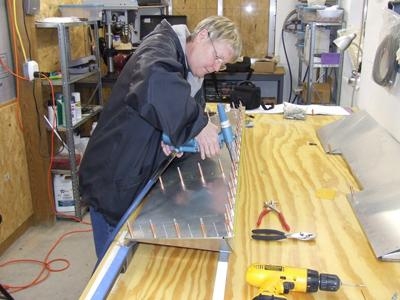Wed, Nov 12, 2014
Building Your Own Aircraft Can Be Challenging And Rewarding, But You Need To Understand The 51% Rule Before Starting
To get an amateur built aircraft approved by the FAA, the regulations require you build the “major portion” of the aircraft. This is what is commonly referred to as the “51% rule.” Complying with this rule can become complicated but let’s take a brief look at the intent of the rule.

When the FAA came up with the regulations for issuing airworthiness certificates to amateur-built aircraft they based their approval on the presumption that builders constructed their aircraft, “solely for their own education or recreation.” In other words, building your own aircraft has to be based on being a hobby, not a profession.
If you’re thinking about building a kit-produced aircraft, the kit manufacturer has the option to have their kit be evaluated by the FAA and listed as an approved 51% kit. This is a great service to the homebuilder. However, manufacturers are not required to do this. If the kit manufacturer is not listed on the FAA 51% list, it does not necessarily mean that the kit does not qualify. Ultimately, it’s up to the builder to prove to the FAA that they are in compliance with the majority-portion rule.
Things can get a little wormy if you’re buying a partially completed project from someone else or if any components of the project come from an FAA type-certificated aircraft. In situations like these it’s important to get advice prior to getting involved. Another area to watch out for is hiring professional help to complete the project. This can be done, but once again, the devil’s in the details.
It’s almost impossible to impress the importance of understanding how the system works before getting involved in aircraft home building. Sometimes taking quick action on a “good deal” can turn into a nightmare. EAA and the FAA have a good working relationship to help keep aircraft home building legal and safe. Resources are out there for learning the rules of aircraft homebuilding; be sure to use them.
(Image from file)
More News
He Attempted To Restart The Engine Three Times. On The Third Restart Attempt, He Noticed That Flames Were Coming Out From The Right Wing Near The Fuel Cap Analysis: The pilot repor>[...]
Make Sure You NEVER Miss A New Story From Aero-News Network Do you ever feel like you never see posts from a certain person or page on Facebook or Instagram? Here’s how you c>[...]
From 2009 (YouTube Edition): Leading Air Show Performers Give Their Best Advice for Newcomers On December 6th through December 9th, the Paris Las Vegas Hotel hosted over 1,500 air >[...]
Aero Linx: NASA ASRS ASRS captures confidential reports, analyzes the resulting aviation safety data, and disseminates vital information to the aviation community. The ASRS is an i>[...]
“For our inaugural Pylon Racing Seminar in Roswell, we were thrilled to certify 60 pilots across our six closed-course pylon race classes. Not only did this year’s PRS >[...]
 NTSB Final Report: Rutan Long-EZ
NTSB Final Report: Rutan Long-EZ ANN FAQ: Turn On Post Notifications
ANN FAQ: Turn On Post Notifications Classic Aero-TV: ICAS Perspectives - Advice for New Air Show Performers
Classic Aero-TV: ICAS Perspectives - Advice for New Air Show Performers ANN's Daily Aero-Linx (06.28.25)
ANN's Daily Aero-Linx (06.28.25) Aero-News: Quote of the Day (06.28.25)
Aero-News: Quote of the Day (06.28.25)



